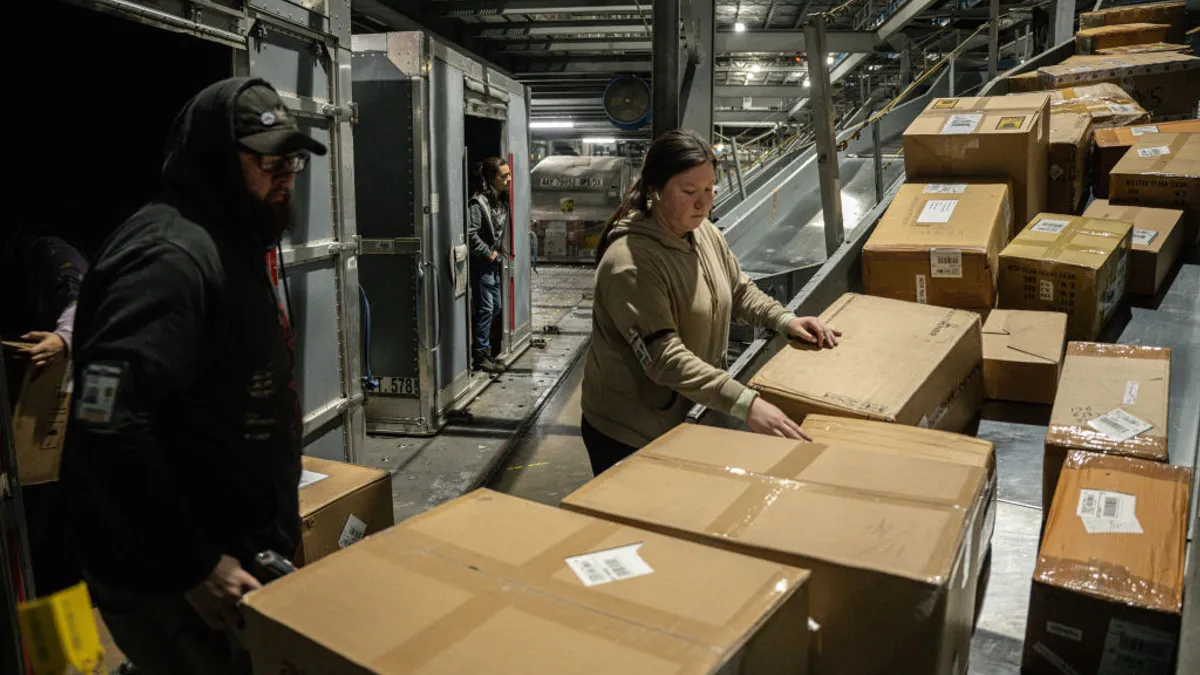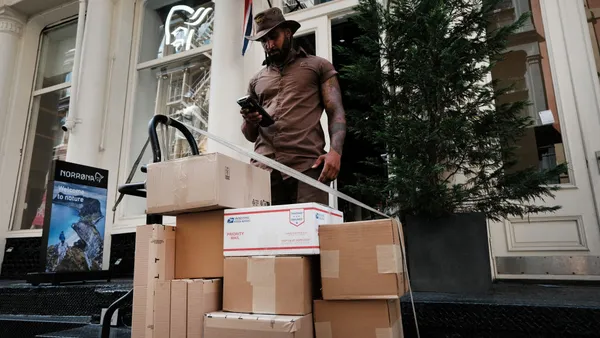Dive Brief:
- UPS used technology involving AI and machine learning to help match its network capacity with shrinking volume levels in Q2, CEO Carol Tomé said in an earnings call last week.
- The set of technologies allowed UPS to quickly adjust the flow of packages in its U.S. operations as shippers shifted volume to other carriers in the thick of the company's contract negotiations with the International Brotherhood of Teamsters.
- "When we saw the volume starting to slow down and actually divert, we were able — through our tools — to move volume away from un-automated hubs to automated hubs," Tomé said. This helped the company reduce labor hours by nearly 10%, in line with the 9.9% decline in U.S. average daily package volume.
Dive Insight:
Advances in technology are helping UPS and its massive package delivery network become more flexible in the face of unexpected changes, such as customers fleeing due to strike concerns. The company's network planning tools are able to "do in an afternoon what used to take a team of engineers months to do," Tomé said.
UPS is leaning on these tools to quickly identify ways it can improve efficiency and lower costs in its package sortation operations. The company reduced costs by $889 million in its U.S. segment in Q2 with the help of technology improvements, CFO Brian Newman said.
"How did we do it? We leveraged our technology and the agility of our integrated network," Newman said.
A stronger reliance on automated hubs is one example of how the company trimmed costs. The company reduced volume at non-automated buildings by 18%, enabling it to close sorts and decrease its operations headcount by 7% YoY, according to an investor presentation.
UPS has also made progress in deploying its smart package initiative throughout its U.S. network, which involves placing RFID tags on parcels and wearable devices on workers to eliminate manual scans and boost throughput. At the end of Q2, nearly 50% of its U.S. buildings were operating with the technology, Tomé said. The company expects deployment to be complete by the end of October.
The next phase of the smart package initiative will involve the company's delivery vehicles scanning the packages rather than employees, Tomé said.
"There is no finish line when it comes to driving efficiency," she said.













